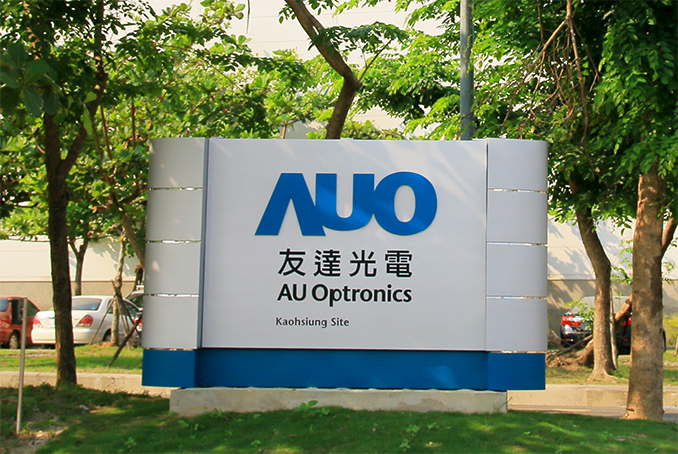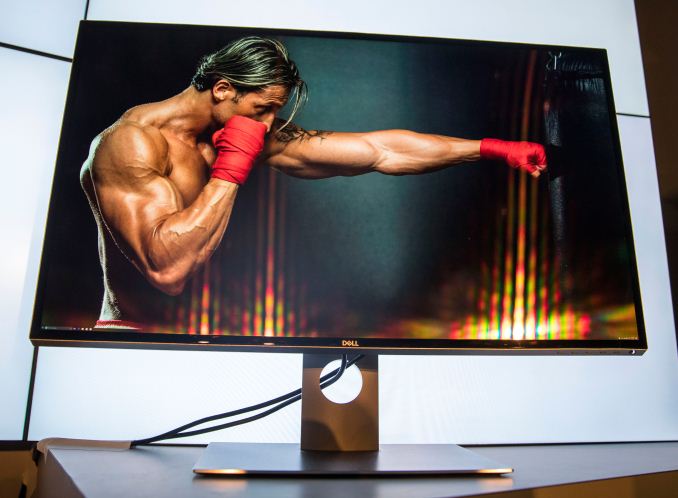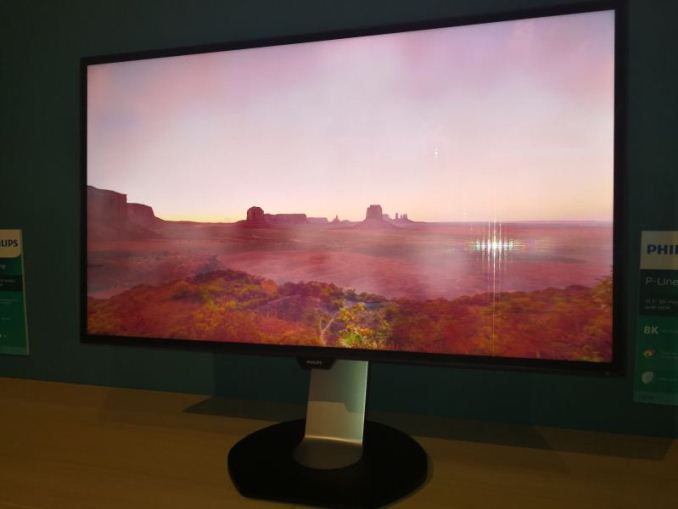AUO to Ship 8K UHD TV Panels in Coming Months
by Anton Shilov on February 23, 2018 4:00 PM EST
AU Optronics this week has announced plans to start shipments of 8K panels for large UHDTVs in the first half of 2018. The panels will enable TV manufacturers to produce “Super UHD” 8K TVs to compete against LG and Samsung later this year.
The lineup of panels featuring a 7680×4320 resolution will be aimed at ultra-high-end TVs and sizes will range from 65 to 85 inches, said Liao Wei-Lun, president of AUO’s video products business group, at a press conference. The high-ranking executive did not disclose other specifications of the panels, such as luminance and contrast ratio, but given their positioning, it is logical to expect their characteristics to be comparable to 8K UHDTVs to be offered by LG and Samsung.
Multiple TV makers demonstrated various 8K UHDTVs at various trade shows in the recent years, but so far no one has started to sell them. Given the lack of content, it is hard to expect high demand for 8K televisions in the next couple of years, aside from the halo factor - nonetheless, AUO expects 8K panels to account for 10% of its '65-inch and above' panel shipments in 2020. The presumably high-cost of the panels would indicate that in terms of unit shipments this might still be a low-ish number. However, as with 4K displays, someone has to release 8K TVs to stimulate content providers to offer appropriate material. At this year’s CES, Samsung demonstrated its Q9S, its first commercial 8K TV-set, but it did not announce its pricing or availability timeframe. LG and Sony also demonstrated their 8K TVs at CES 2018, but nothing is clear about their plans regarding these products.
Since AUO intends to start mass production of the 8K panels for UHDTVs in the coming months, it is highly likely that it has customers willing to use them for their products already. Because we are talking about volume manufacturing, it is likely that AUO’s partners have already developed their UHDTVs based on the early development panels and we are going to see AUO-based 8K UHDTVs later this year.
With Samsung, LG, Sony and various AUO partners onboard, it looks like 8K UHDTVs will finally start to be commercialized this year.
As for 8K displays for PCs, Dell is currently the only company to offer an 8K monitor (this one is based on a panel from LG, so the latter might introduce its own 8K display at some point). Philips last year promised to start shipments 328P8K monitor in 2018, so expect the product to hit the market in the coming months too.
We saw a number of the 8K PC displays last year at various shows:


Left: Dell 8K, Right: Philips 8K
Related Reading
- Philips Demos 328P8K: 8K UHD LCD with Webcam, Docking, Coming in 2018
- Cosemi Announces 328-Feet ‘8K-Ready’ OptoDP Active DisplayPort 1.4 Optical Cable
- Dell’s 32-inch 8K UP3218K Display Now For Sale: Check Your Wallet
- Dell Announces UP3218K: Its First 8K Display, Due in March
- CEATEC 2016: Sharp Showcases 27-inch 8K 120Hz IGZO Monitor with HDR, also 1000 PPI for VR
Source: DigiTimes










29 Comments
View All Comments
Hurr Durr - Saturday, February 24, 2018 - link
Professional movie hardware actually jumped to 4k quite a while ago.CrazyElf - Saturday, February 24, 2018 - link
I kind of wish that they shipped 4096 x 2160 as 4k rather than 3840 x 2160, and likewise, an 8k 8192 x 4320 screen rather than 7680 pixels across.An OLED 8k would look beautiful in mass production.
timbotim - Sunday, February 25, 2018 - link
Yes :) 8K at 65 inches - this is what we want. I am sure some of you don't see a need for more than 4K, but trust me some of us don't care for greater dpi, 100-150dpi is fine - 8K at ~5 foot diagonal would be great. I'd really like to see 16K at ~10 foot diagonal sometime early in the next decade, too.d7v7d - Monday, February 26, 2018 - link
Every time news of 8k UHD displays occurs, resulting news comments myopically only talk about how there won't be any TV content nor will there be any broadcast TV at 8K for years as though that is all that matters since such is the overwhelmingly dominant market. What about commercial graphic users, medical imaging, and other special users that can benefit from more detail? OK sure those are small niche low volume. Well consider how many hundreds of millions of people today across the world own compact digital cameras, DSLR digital cameras, mirrorless digital cameras, and especially now smartphone digital cameras that have greater than 8 megabyte sensors. A decade plus old 8k sensor is about 2048 by 4096 pixels. Just a bit larger than a 1920 by 3840 4k UHD display. That means none of the rest of us with newer sensors can display our current images fully on even a 4K UHD screen.My 2014 24 megapixel Sony A6000 is 6000 by 4000 pixels. Only an 8k UHD 7680 by 3840 is able to display such images fully. Consider a 45.4mb Nikon D850 now in millions of high end users hands, 8256 by 5504 pixels. Even 8k is inadequate though greatly closer than a 4k panel. Consider how newest display technologies with HDR, high color accuracy, dynamic range of brightness, and such tech as OLED can make still images appear amazing. Have any of you actually seen what high end still images look like on such devices? Your jaws will drop. Consider how thin and even flexible some newest displays are that can fit on walls easily? So can you imagine that market? Well obvious many of you haven't yet.